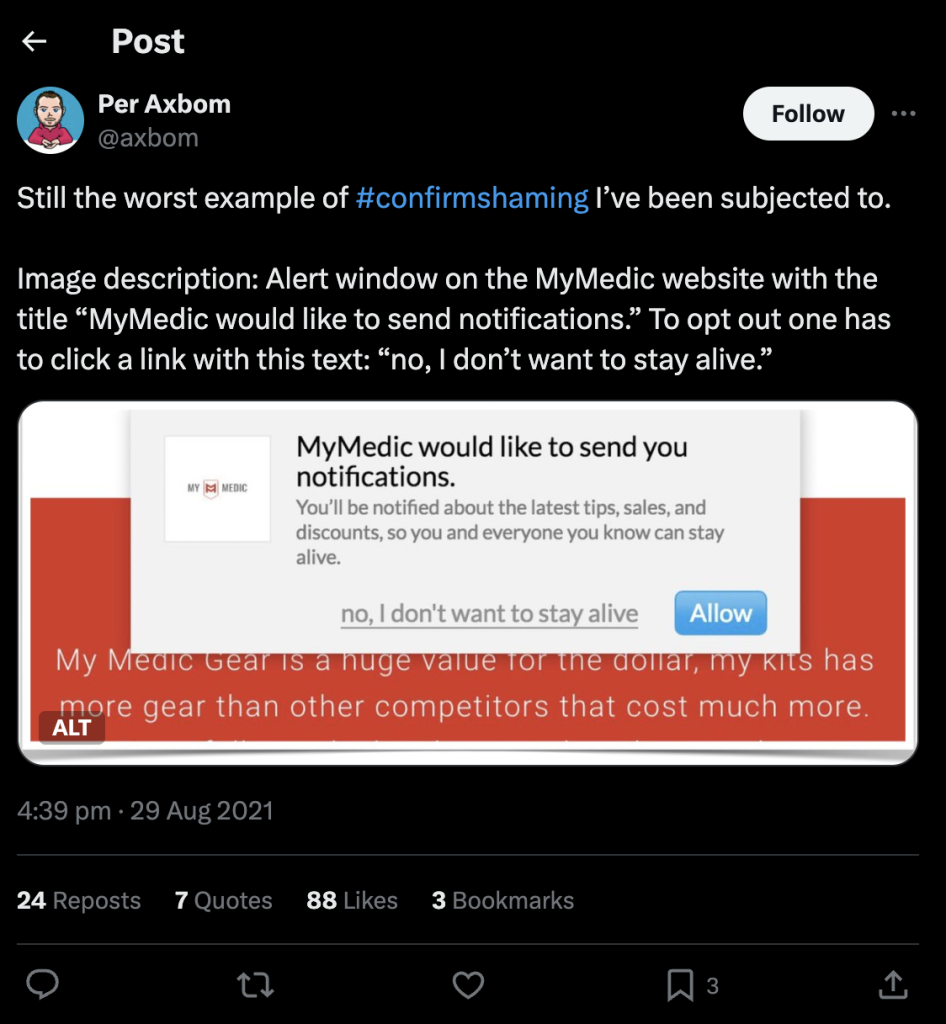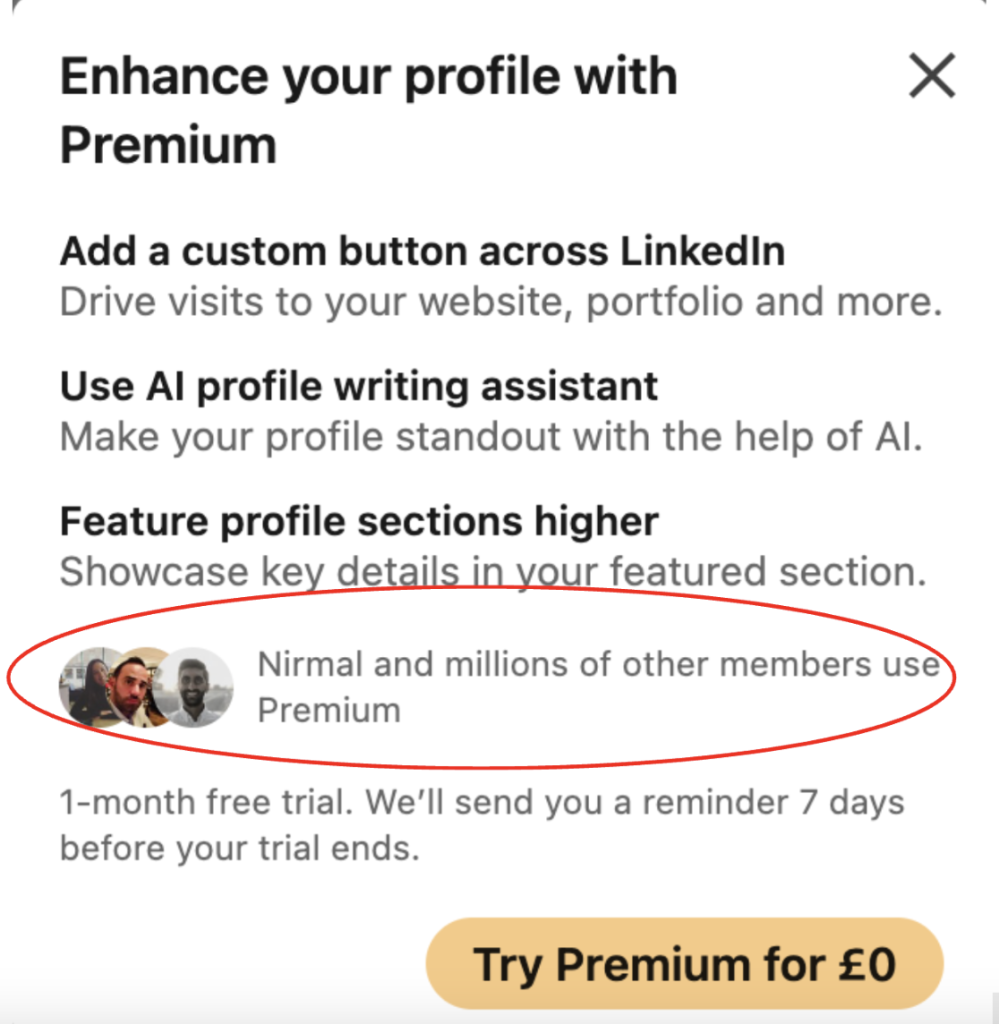
As Halloween approaches, it’s the perfect time to explore something truly unsettling: deceptive patterns in digital.
These deceptive design tactics are crafted to manipulate users into making decisions they wouldn’t have otherwise made, leading to an increasingly controversial topic.
While these tactics may lead to short-term boosts in conversion rate (CVR), the long-term impact on customer lifetime value (CLV) and brand reputation is far more damaging.
Consumers today are more savvy, cautious, and aware of these manipulative strategies. Trust today is paramount, and the use of deceptive patterns can erode brand loyalty and ultimately reduce CLV.
Not only do deceptive patterns harm CLV, but they also now come with serious legal risks. Regulations like the EU’s GDPR and actions by the Federal Trade Commission (FTC), have begun cracking down on companies that employ these tactics, issuing hefty fines for those found guilty (which we shall be exploring later on).
What are Deceptive Patterns?
The term ‘Dark Patterns’ was coined by UX consultant Dr. Harry Brignull in 2010 to describe design techniques that intentionally mislead or coerce users into taking actions they wouldn’t normally take. These range from tricking users into signing up for unwanted subscriptions, to hiding additional fees until the final step of purchase.
However, Brignull has since acknowledged that the term feels somewhat outdated, and now prefers the term ‘deceptive patterns‘ to more accurately capture the intentional nature of these manipulative design tactics.
As Brignull explains in his book Deceptive Patterns: The Art of Misleading Users:
“Today, design is far less about how you decorate things, and far more about how you persuade and influence people into doing things. It’s mainly about tracking, testing, psychology, behavioural economics, statistics and empirical scientific research. In other words it’s all about achieving business goals and making money.”1
While these practices may yield quick wins in terms of increased sales, they come at the cost of trust and long-term customer loyalty.
Why Deceptive Patterns Might Boost CVR – But at a Cost
Deceptive patterns can increase conversion rates because they leverage psychological manipulation. For instance, a user might unknowingly subscribe to a recurring payment or agree to terms they don’t fully understand. This can give businesses a quick bump in revenue.

As a famous example, a very well-known airline used deceptive patterns to make it difficult for customers to opt out of add-ons like insurance. As pictured above, they hid the ‘Don’t insure me’ option in a country selection dropdown menu, making it frustrating to find.
While such tactics might result in higher sales, they can also leave customers feeling tricked, leading them to avoid that company in the future.
Confirmshaming: A Guilt-Driven Tactic
Confirmshaming is a manipulative tactic that works by triggering uncomfortable emotions, such as guilt and shame, to influence users’ decision-making process.
Websites or apps employing this deceptive pattern often present users with opt-out button labels that are worded in a derogatory or belittling manner, making users feel bad about choosing not to engage with the offered service, or feature. By targeting users’ emotions and self-image, confirmshaming aims to increase the likelihood that users will give in to the desired action, ultimately benefiting the service provider.

As an example, eCommerce website Mymedic.com sells first aid packs and medical supplies. In 2018, Mymedic used the confirmshaming tactic to an extreme level.
When asking permission for its website to send notifications, the opt-out link label was presented as “no, I don’t want to stay alive.” Given its target audience – people likely to be exposed to accidents or trauma – this manipulation crosses ethical lines, preying on fear and emotional vulnerability. Such tactics damage trust and customer relationships.
Social Proofing vs Deceptive Design
It’s important to note that social proofing and deceptive patterns may seem similar, but they are notably different. Social proofing is a legitimate design technique that leverages the behaviour and testimonials of others to guide users towards a decision.
“The social proof cognitive bias is a phenomenon in which individuals are likely to conform to the behaviour of others (…) To put it another way, if we see that numerous people perceive something as valuable, we are likely to believe that they are correct.”3
While straightforward and truthful messaging is perfectly acceptable, the scarcity effect is a powerful tactic that can effectively drive user engagement – as long as it is based on genuine scarcity rather than a misleading claim.
Take the signup page for Linkedin Premium as an example. The design utilises social proofing by highlighting my connections who are already using the service.
As long as the information provided is accurate and connections truly use the service, this is a persuasive design – not a deceptive one.

The key difference is the honest use of data to nudge users toward a purchase rather than tricking them into it.
The Impact on Customer Lifetime Value and Brand Reputation
While deceptive patterns may drive an initial sale or engagement, they can drastically reduce CLV by undermining customer trust and damaging a brand’s reputation.
Today’s consumers are not only more informed, but also more empowered to share their experiences online. A negative interaction can lead to complaints on social media, negative reviews, or even legal challenges, all of which can tarnish a brand’s reputation. Trust is fragile, and once lost, it can take years for a brand to rebuild, ultimately affecting customer loyalty and lifetime value.
For instance, a single dissatisfied customer can spark significant fallout, as British Airways discovered when one customer took to Twitter, now X, to criticise their service stating:
“Don’t fly BritishAirways. Their customer service is horrendous.”
The story gathered widespread media attention and damaged the airline’s reputation. This shows the power that consumers hold and how easily negative experiences, often fuelled by deceptive patterns, can harm a brand long after the transaction is complete.
Legal and Ethical Consequences
Deceptive patterns are no longer just an ethically grey area, they’ve become a key focus of regulators worldwide. As lawmakers catch up with the rapid evolution of digital design, companies employing deceptive patterns have been facing serious legal consequences.
Laws like the EU’s General Data Protection Regulation (GDPR) and the U.S Federal Trade Commission (FTC) regulations target deceptive practices.
The FTC recently announced its “click to cancel” rule, set to come into effect in early 2025, which will require companies to make subscription cancellations as simple as sign-ups. This rule mandates businesses to obtain customer consent before renewing subscriptions or converting free trials into paid memberships. As FTC chair Lina Khan explained:
The rule also prohibits companies from forcing users to go through chatbots or agents to cancel subscriptions they were initially signed up for online.
One of the most high-profile cases was in 2023, when Epic Games was fined $245 million by the FTC for using deceptive techniques to manipulate players into making unintended purchases. The FTC accused Epic of making it difficult for users to cancel or request refunds for unauthorised charges in Fortnite. The company obscured cancellation options and created a lengthy, complicated refund process, deliberately discouraging users from seeking refunds.
Similarly, TikTok faced fines for nudging children toward privacy-intrusive settings, the DPC, Data Protection Commission, observed that TikTok employed deceptive patterns such as Preselection, Visual Interface, and Forced Action. As a consequence, TikTok were fined €345.
As these legal cases illustrate, the use of deceptive patterns not only risks financial penalties, but also further diminishes customer trust. The long-term costs of implementing such strategies far outweigh the short-term gains.
Conclusion: Build Trust, Not Short-Term Gains
To conclude, deceptive patterns might seem like an easy win for businesses looking to boost conversions, but the long-term consequences can be devastating to customer trust and CLV. Beyond the direct financial implications, deceptive practices can significantly damage your brand’s reputation, a single bad experience can go viral, tarnishing your brand’s image and reducing customer loyalty.
As customers become more informed and regulations tighten, it’s more important than ever to focus on ethical design practices that prioritise transparency and respect for the user. By doing so, businesses can build lasting relationships with their customers.
Contact us today to learn how we can help you create a user-first experience that keeps customers coming back to their trusted brands.
- Harry Brignull, Deceptive Patterns: The Art of Misleading Users (London: UX Publishing, 2013), p. 13.
↩︎ - Source: https://x.com/axbom/status/ 1432004956190556163 ↩︎
- Harry Brignull, Deceptive Patterns: The Art of Misleading Users (London: UX Publishing, 2013), p. 52 ↩︎



